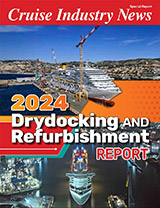The Port of Los Angeles has announced that air pollution associated with its operations has reached its lowest level since the port adopted a formal plan to reduce harmful emissions nearly seven years ago.
According to the port, there has been a 79 percent drop in diesel particulate matter (DPM) since 2005. Removing cargo volume fluctuations, DPM related to moving containers was 81 percent lover in 2012 over 2005.
“Every year really does count and our systematic approach has accelerated our progress,” said Los Angeles Harbor Commission President Cindy Miscikowski. “Much of the credit is shared by our industry partners who have invested in technology that in some cases surpass government regulations.”
The Port’s overall success continues to be reflected in the dwindling share of emissions its activity contributes to the South Coast Air Basin. The region is home to 14.6 million people and takes in portions of Los Angeles, San Bernardino and Riverside counties and all of Orange County.
For 2012, 6 percent of all SOx emissions throughout the basin was attributable to operations at the Port — down from 25 percent in 2005. Likewise, DPM emissions from the port are now at 4 percent, compared with 10 percent in 2005, and NOx emissions have fallen to 3 percent from 5 percent in 2005.
The Port’s Inventory of Air Emissions tracks the progress of a comprehensive suite of clean air measures, requirements and incentives to reduce harmful emissions from all sources associated with port operations: ships, trucks, trains, cargo-handling equipment and smaller harbor craft. The latest findings are based on data from the 2012 calendar year and compared with data collected annually since the baseline year of 2005.
In addition to exceeding the Port’s 2014 goal for DPM, a toxic contaminant and known carcinogen, the latest data shows a record plunge in emissions of nitrogen oxides (NOx) and sulfur oxides (SOx), which have fallen 56 percent and 88 percent respectively since 2005. The results exceed the Port’s 2014 goal for NOx and put the Port within striking distance of its goal to cut SOx emissions 93 percent by 2014. Both NOx and SOx are key components of smog.
For SOx alone, 2012 marked the greatest reduction in a single year since 2005, said Port Executive Director Geraldine Knatz, Ph.D. “This past year, SOx emissions were cut in half,” said Knatz. “That doesn’t happen without teamwork, which shows how far we’ve come and what ports, ocean carriers, regulatory agencies and others can do together.”
The SOx findings are especially significant because they reflect major progress in tackling vessel emissions. Ships remain the biggest generators of port-related air pollution and they pose the greatest challenge because they are a mobile source regulated by international convention.
The 2012 results are based on a combination of new and ongoing clean air initiatives. Last year marks both the first full year of California’s expanded low sulfur fuel boundaries and first full year of the Port’s Clean Truck Program, which bans pre-2007 engines from service to the Port and was phased in over more than three years.
Last August, low sulfur fuel requirements extended to waters within 200 miles of North America, under environmental rules adopted by the International Maritime Organization.
Also, new state rules and incentives for cleaner cargo handling equipment and commercial harbor craft took effect in 2012. Programs pioneered by the San Pedro Bay ports led to the statewide regulations.
New air quality monitoring data validates the Inventory’s results. Released earlier this year, the data shows monitoring stations in and around the Port also registered the lowest levels of DPM since 2005.



